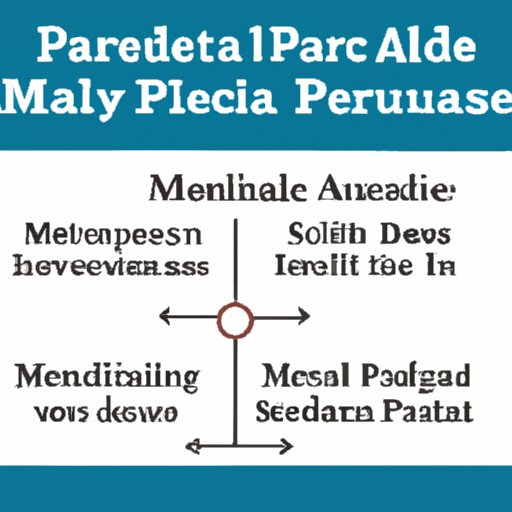
Introduction
Making the transition to retirement can be an overwhelming experience, with so many new changes to navigate, including healthcare benefits. Among the array of healthcare options, Medicare is one of the most crucial programs to understand. One of the most common questions asked about Medicare is whether or not it’s free at age 65. In this article, we’ll explore the ins and outs of Medicare Part A and provide a complete guide to understanding your eligibility and enrollment options.
Medicare Part A: A Complete Guide to Understanding Your Eligibility for a Free Plan at Age 65
What is Medicare Part A?
Medicare Part A is an important part of the Medicare program offered by the US government. It provides coverage for a range of hospital and inpatient care services. This can include hospital stays, skilled nursing facility stays, home health care services, and hospice care.
Who is Eligible for Medicare Part A?
In most cases, if you’re a US citizen or permanent legal resident, you’re eligible for Medicare Part A at age 65. Additionally, some younger individuals with disabilities may also qualify for benefits.
Exploring the Different Enrollment Options
If you’re already receiving Social Security benefits when you turn 65, you don’t need to enroll in Medicare Part A separately. You’ll automatically be enrolled. If you’re not receiving Social Security and are over 65, you’ll need to sign up for Medicare on your own.
Breaking Down the Basics: Is Medicare Part A Really Free Once You Hit 65?
Defining What it Means for Medicare Part A to Be “Free”
Medicare Part A can be considered “free” in the sense that there’s typically no monthly premium you’ll need to pay to receive coverage. However, there may still be other costs associated with using the program.
Understanding the Costs Associated with Medicare Part A
Although there’s typically no premium for Medicare Part A, there are other costs associated with using the program. This includes a deductible for hospital stays, as well as possible coinsurance payments for longer hospital stays.
Navigating Medicare Part A: Everything You Need to Know About Qualifying for a Free Plan
Criteria for Receiving Free Medicare Part A Coverage
In order to receive free Medicare Part A coverage, you’ll typically need to have paid into the program through payroll taxes for at least ten years. If you haven’t met this requirement but are at least 65 and a US citizen, you may still be eligible for benefits, but there may be a premium you need to pay.
Exploring Possible Exceptions to the Free Coverage
In some cases, individuals may need to pay a premium or won’t be eligible for free Medicare Part A coverage. This can include individuals who haven’t paid into the program for at least ten years or certain non-US citizens.
The Ins and Outs of Medicare Part A: How to Determine Your Eligibility and Enrollment Options
How to Determine If You’re Eligible for Free Medicare Part A Coverage
If you’re unsure if you’re eligible for free Medicare Part A coverage, there are several ways to check. You can check your eligibility online or by calling the Social Security Administration.
Understanding the Different Enrollment Options Available
There are several different options available for enrolling in Medicare Part A, including online, through the mail, or in-person at a Social Security office.
Understanding the Fine Print: Exploring the Exceptions to Medicare Part A’s Free Coverage at Age 65
Discussing the Different Exceptions to Medicare Part A’s Free Coverage
There are several different exceptions to Medicare Part A’s free coverage, including non-US citizens, those with less than ten years of payroll tax contributions, and certain individuals with end-stage renal disease.
Provide Examples of Common Exceptions
One common example of an exception to the free coverage is a non-US citizen who hasn’t met the ten-year payroll tax contribution requirement. In this case, they may need to pay a premium to receive coverage.
Saving on Healthcare Costs: How to Take Advantage of Medicare Part A’s Free Plan at Age 65
Exploring the Different Ways to Save on Healthcare with Medicare Part A
There are several different ways you can save on healthcare costs with Medicare Part A, including choosing an in-network provider and taking advantage of preventive care services.
Tips for Maximizing Your Medicare Benefits
To maximize your Medicare benefits, be sure to fully understand your coverage and work with your healthcare provider to find ways to save.
Making Sense of Medicare: Your Guide to Understanding How and When You Qualify for Medicare Part A’s Free Plan
Reviewing the Different Qualifications for Medicare Part A’s Free Plan
To qualify for Medicare Part A’s free plan, you’ll typically need to meet the ten-year payroll tax contribution requirement.
Discussing When to Enroll in Medicare Part A
It’s important to enroll in Medicare Part A at the right time to avoid any potential fees or penalties. In many cases, this will mean enrolling as soon as you become eligible at age 65.
Conclusion
Understanding your eligibility and enrollment options for Medicare Part A is crucial for successfully navigating the healthcare system. By reviewing the topics covered in this article, you can get a better sense of whether you qualify for free Medicare Part A coverage and how to enroll. With this understanding, you can take advantage of this important program and save on healthcare costs.




